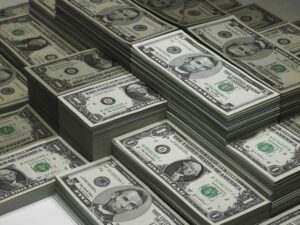
Asian Currencies Struggle as Dollar Strengthens After Fed Rate Cut

On Thursday, most Asian currencies traded in a flat-to-low range, weighed down by a sharp rise in the U.S. dollar following a significant interest rate cut by the Federal Reserve. Despite the cut, the Fed signaled a less dovish stance on future rate decisions, which pressured currencies across Asia.
Japanese Yen Among the Worst Performers
The Japanese yen faced heavy selling pressure, with the USD/JPY pair rising 0.6% to 143.12. The yen’s weakness was driven by the strengthening dollar and market expectations that the Bank of Japan (BOJ) will maintain its current interest rate policy in its upcoming meeting. Traders are betting on no immediate rate hikes, although future rate increases remain possible given Japan’s elevated inflation outlook.
Broader Asian Currencies Muted Amid Mixed Signals from the Fed
Most Asian currencies were subdued, reflecting mixed responses to the Federal Reserve’s actions. While the central bank cut its benchmark interest rate by 50 basis points—meeting the higher end of expectations—Fed Chair Jerome Powell emphasized a balanced outlook between inflation and labor market concerns. Powell also ruled out a return to ultra-low interest rates seen during the pandemic, signaling that rates would likely remain higher over the medium to long term.
These developments dampened sentiment in the Asian forex market, with traders now pricing in slower rate cuts than initially expected. The market anticipates at least 125 basis points in rate cuts by the end of 2024, but Powell’s comments suggest higher rates may persist longer than anticipated.
U.S. Dollar Rises as Fed Outlook Turns Less Dovish
The U.S. dollar index and dollar futures surged 0.4% during Asian trading hours, extending gains from the previous session. This strength in the greenback came despite the Fed’s rate cut, with markets interpreting Powell’s remarks as a signal that aggressive monetary easing was off the table for the near future.
Mixed Performance Across Asian Currencies
The Australian dollar (AUD/USD) rose 0.4%, buoyed by a stronger-than-expected August labor market report. This data gives the Reserve Bank of Australia room to keep rates elevated, as inflation remains stubbornly high.
The Chinese yuan (USD/CNY) traded flat after initial gains, as investors awaited the People’s Bank of China’s decision on its loan prime rate, expected on Friday. The bank is likely to leave rates unchanged.
Elsewhere, the South Korean won (USD/KRW) dropped 1% following the resumption of trading after a three-day holiday. South Korea’s trade balance narrowed slightly in August.
The Indian rupee (USD/INR) remained steady, avoiding a breach of the critical 84-level mark. Similarly, the Singapore dollar (USD/SGD) showed little movement during the day.
Never miss any important news. Subscribe to our newsletter.
Related News


USD/INR Slows Down Amid Mixed Indian PMI Data.


USD/INR Rises as Markets Anticipate Fed Rate Decision.


Gold Price Nears Record High Amid Strong Safe-Haven Demand.



USD/INR Gains Momentum Amid Trade Tariff Uncertainty.



Never miss any important news. Subscribe to our newsletter.
Editor's Pick


USD/INR Slows Down Amid Mixed Indian PMI Data.


USD/INR Rises as Markets Anticipate Fed Rate Decision.



